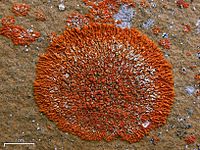
Optimum growth and quality of the edible ice plant under saline conditions.
Sign Up to like & getrecommendations! Published in 2021 at "Journal of the science of food and agriculture"
DOI: 10.1002/jsfa.11608
Abstract: BACKGROUND Ice plant is a halophyte, known for its antioxidant activity and for being a highly functional food. It is capable of increasing its contents of health-promoting compounds when subjected to certain stresses such as… read more here.
Keywords: plant; ice plant; salinity; 300 nacl ... See more keywords

Functional analysis of McSnRK1 (SNF1-related protein kinase 1) in regulating Na/K homeostasis in transgenic cultured cells and roots of halophyte Mesembryanthemum crystallinum
Sign Up to like & getrecommendations! Published in 2019 at "Plant Cell Reports"
DOI: 10.1007/s00299-019-02412-2
Abstract: Key messageTransgenic callus and roots of ice plant with altered SnRK1 function were established using Agrobacterium-mediated transformation. The role of McSnRK1 in controlling Na+ influx and Na/K ratio was demonstrated.AbstractSnRK1 kinases (SNF1-related protein kinase1) control… read more here.
Keywords: cultured cells; mcsnrk1; plant; ice plant ... See more keywords

Ice plant root plasma membrane aquaporins are regulated by clathrin-coated vesicles in response to salt stress.
Sign Up to like & getrecommendations! Published in 2022 at "Plant physiology"
DOI: 10.1093/plphys/kiac515
Abstract: The regulation of root PLASMA MEMBRANE INTRINSIC PROTEIN (PIP)-type aquaporins is potentially important for salinity tolerance. However, the molecular and cellular details underlying this process in halophytes remain unclear. Using free flow electrophoresis and label-free… read more here.
Keywords: root plasma; plasma; ice plant; plasma membrane ... See more keywords

High‐quality ice plant reference genome analysis provides insights into genome evolution and allows exploration of genes involved in the transition from C3 to CAM pathways
Sign Up to like & getrecommendations! Published in 2022 at "Plant Biotechnology Journal"
DOI: 10.1111/pbi.13892
Abstract: Summary Ice plant (Mesembryanthemum crystallinum), a member of the Aizoaceae family, is a typical halophyte crop and a model plant for studying the mechanism of transition from C3 photosynthesis to crassulacean acid metabolism (CAM). Here,… read more here.
Keywords: ice; genes involved; ice plant; plant ... See more keywords

Root system architecture analysis in Mesembryanthemum crystallinum (ice plant) seedlings reveals characteristic root halotropic response.
Sign Up to like & getrecommendations! Published in 2020 at "Biology open"
DOI: 10.1242/bio.052142
Abstract: One of the major environmental stress factors that affect root growth is salinity. Arabidopsis thaliana, a glycophyte, shows halotropism, whereby it alters the direction of root growth in a non-gravitropic pattern to evade high soil… read more here.
Keywords: halotropic response; root; ice plant; salinity ... See more keywords

The first released available genome of the common ice plant (Mesembryanthemum crystallinum L.) extended the research region on salt tolerance, C3-CAM photosynthetic conversion, and halophism
Sign Up to like & getrecommendations! Published in 2023 at "F1000Research"
DOI: 10.12688/f1000research.129958.1
Abstract: Background: The common ice plant (Mesembryanthemum crystallinum L.) is an annual herb belonging to the genus Mesembryanthemum of the family Aizoaceae, native to Southern Africa. Methods: We performed shotgun genome paired-end sequencing using the Illumina… read more here.
Keywords: ice; genome; tolerance; ice plant ... See more keywords